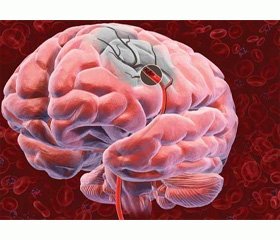Международный неврологический журнал 4 (66) 2014
Вернуться к номеру
Assessment of the damage to brain tissue by immunoassay in acute ischemic stroke
Авторы: Cherny V.I. - Donetsk National Medical University named after M. Gorky, Department of Anesthesiology, intensive care and cardiosurgery
Рубрики: Неврология
Разделы: Справочник специалиста
Версия для печати
ischemic stroke, neuroprotection, immunoassay.
A key issue in the treatment of stroke is to understand the importance of studying the degree of destruction of brain tissue and blood-brain barrier. It should be noted that the data on the pathophysiology of ischemic stroke have increased substantially in recent years. Notable changes in the penumbra zone formed mainly under the influence of abnormal glutamate cascade, is the main goal in the treatment of ischemic stroke [9].
Speaking on the current international treatment protocols of ischemic stroke , it should be noted that they have not changed much over the past 10 years. Moreover, the proliferation of evidence-based medicine , many of the items have disappeared from the protocols [7].
Ultimately, the number of necessary measures at the first day of the disease is reduced to a quick hospitalization within 4 hours of onset, the implementation of neuroimaging techniques , determining the subtype of ischemic stroke and raising the question of thrombolytic therapy as the only proven effective treatment [6].
However, in the real world, physicians often do not have the possibility of thrombolytic therapy, the effectiveness of which is observed only in the first 3 hours of the disease, due to late hospitalization [5].
In recent years, increased attention to diagnostics, including the definition of neurospecific proteins, reflecting damage to brain tissue ( NRC) - biologically active molecules specific for nerve tissue. To date, the most promising markers of damage to the central nervous system and brain are as follows: NSE (neuron -specific enolase ) which is a glycolytic isoenzyme neuron specific enolas and GFAP (gliofibrillar acidic protein) which is a specific protein of astrocites.
Growth of antibodies to it accompanies the pathological processes of proliferation of astroglial cells (gliosis). The authors believe that a promising method in the diagnosis of lesions of the brain tissue is the study of antibody titers to both gray and white matter of the brain. The article presents the results of clinical, neurological and immunological examination of 116 patients aged 36 to 69 years with acute ischemic stroke.
Patients were randomized by random numbers to the group treated by standart protols (№ 487, № 602) and group, in addition to standard treatment, receiving neuroprotective complex. Aim of this study was to determine the levels of neuron - specific proteins as markers of neuronal damage and glial cells, as well as the BBB. First time was a complex brain antigen designed to determine the titer of antibodies to the gray and white matter of the brain.
Analysis of the dynamics of antibody titer to the gray and white matter of the brain from 1 to 14 days of therapy showed that in the groups of patients (1 and 3), which used an extended neuroprotection on the 14th day of treatment immune response to brain damage was statistically significantly lower than in the groups of patients (2 and 4 ), where the treatment was carried out under orders MSS. In groups using a set of neuroprotection (1 and 3) to improve the astrocytic and neuronal complex functioning of the BBB, compared with patients without the use of neuroprotection, as determined by examining the proteins NSE and GFAP in the dynamics of the disease.
We developed test system cerebral antigen that can be used as a more affordable alternative to costly NBF to diagnose the state of white and gray matter of the brain and the degree of BBB permeability in the dynamics that give more precise information about the severity of ischemic stroke patient.
Determining the level of neuron - specific proteins NSE and GFAP can more accurately determine the functional state of the brain tissue in the current treatment of patients with acute ischemic stroke.

